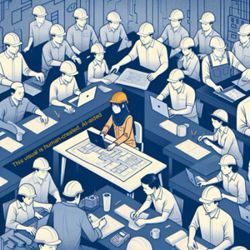
Crucial help: The correct way to place an AED pad being demonstrated on a doll. — Shaari ChemaT/ The Star
PETALING JAYA: AED isn’t an acronym that is familiar to most Malaysians.
Yet, Automated External Defibrillators play a big role in saving lives, so cardiologists are of the view that there should be greater accessibility to these devices in public spaces.
Health Ministry Cardiology Services deputy head Datuk Dr Asri Ranga Abdullah Ramaiah said AEDs should be more widely available especially at locations with a higher risk of cardiac events such as sports arenas, gymnasiums, schools and airports.
He said these devices are essential for immediate life-saving intervention in cases of cardiac arrest, so it should be placed in locations that are easily accessible, ideally with clear signage and lighting.
On Saturday, Health Minister Datuk Seri Dr Dzulkefly Ahmad said that the survival rate in cases of sudden cardiac arrest is low, with less than 1% of victims surviving if no action is taken.
He said that AEDs are life-saving devices that can increase the survival rate because 70% of such cases occur outside of hospitals, where the time between the collapse and defibrillation is crucial.
Dr Asri Ranga, when contacted, emphasised on hands-on training and familiarity in the use of AED and also in providing cardiopulmonary resuscitation (CPR).
“It is important to start CPR and AED training from a young age. Primary schools should start holding introduction courses, perhaps in Year 6 and further enhanced in secondary school for greater understanding. Broader first aid training can help individuals assess the situation and act in a calm and measured manner during a health emergency,” he said.
Dr Asri Ranga said while AEDs are designed to be user-friendly with built-in voice prompts and visual guides that enable even untrained individuals to use them accordingly, he cautioned that the misapplication of the device could potentially cause harm or delay proper care for the patient.
“These are cases when someone unfamiliar with an AED uses it incorrectly such as shocking a person who is not in need of defibrillation or is in a non-cardiac emergency.”
However, he said most AEDs will analyse the heart rhythm and only recommend a shock if one is needed, thus minimising the risk of any harm.
“Hence, the potential benefits outweigh the risks. There may also be concerns about liability if an AED is used incorrectly, but if there are laws such as the Good Samaritan Law, those acting in good faith to help are generally protected,” he said.
To encourage the accessibility of AEDs at business premises and other locations, he said the government and private organisations could collaborate to subsidise the cost.
He said the price of AEDs ranging from basic to advanced models could be between RM8,000 and RM18,000.
Consultant cardiologist Dr Nor Halwani Habizal proposed that there be a policy for all new buildings to be equipped with AEDs.
However, she voiced the concern about vandalism and environmental factors that may compromise the serviceability of the device.
“While AEDs in public spaces can save lives, it must be safeguarded to ensure it is serviceable at times of need. Education is important to create awareness among the people to guard this precious life-saving device at public areas,” she said.
Consultant cardiologist and electrophysiologist Dr Sathvinder Singh Gian Singh said a patient who suffers cardiac arrest has a 70% chance of survival if he is defibrillated with an AED within the first three minutes of passing out.
He said an AED could restore or “reset” heart rhythms back to normal by delivering electric shocks.
“During cardiac arrest, for every passing minute, the survival rate declines by 10% without the intervention of an AED. This is why it is crucial to have quick accessibility to AEDs.”
In the absence of an AED, he said CPR should promptly be administered.
Community leader and former Petaling Jaya Malaysian Crime Prevention Foundation chairman Eric Chew, who launched a nationwide campaign to promote the placement of AEDs in public areas several months ago, said with cases of heart disease among younger folk on the rise, he hoped the government would launch more initiatives to encourage the private sector to have AEDs at its premises.
“For a start, all pharmacies which often operate for over 12 hours daily could equip their stores with AEDs and train their staff on how to use it.
“So, in case of an emergency, help can be sought from the nearest pharmacy,” he said.









































